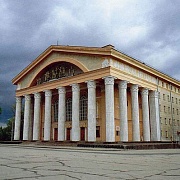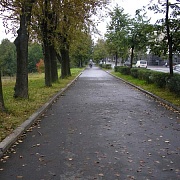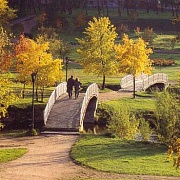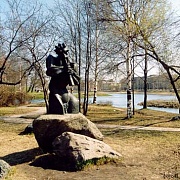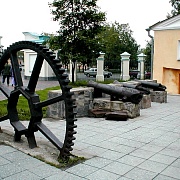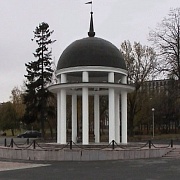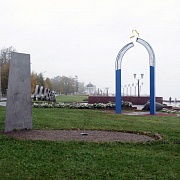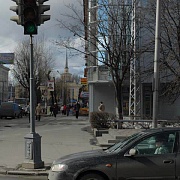The foundation of Petrozavodsk is connected with the name of the emperor Peter The Great. In 1703, the same year a new Russian capital Saint-Petersburg was built, on the empty shores of Lososinka river Petrovsky Plant was founded. Its main activity was to process surrounding lacustrine and marsh ores, to cast cannon balls for the army and an infant navy, to produce firearms and cold weapons. By the way, some models of the plant’s production are represented in the Armoury Chamber of the Moscow Kremlin and St. Petersburg Museum of Artillery.
Soon the plant was surrounded by the Petrovsky Sloboda, which was mainly inhabited with workmen, soldiers, and bureaucracy of the mining department. After the end of the Northern War the importance of the plant, which was located not far from the battlefield, diminished and it was closed. But Russian aggressive foreign policy both in the north (against Sweden) and in the south (against Ottoman Turkey) soon demanded an extension of armament production again.
In 1773 building of Aleksandrovskiy iron-smelting and cannon-casting plant started and in a year it released its first production. According to the decree of the Empress Catherine the Second in 1777 Petrovsky plant settlement was given a status of a city and in 1784 it became the center of a new Olonets province. Gavrila Derzhavin, a poet and a grandee, became the first civil governor of the region. Buildings of the historical center such as architectural ensembles of the Round Square (present-day Lenin Square) and the Cathedral Square (present-day Kirov Square) have been kept safe since the first years of Petrozavodsk being a capital city of the province.
The classics of the 19th century can be easily seen in the complex of Aleksandrovsky (present-day Onezhskiy Tractor) plant buildings, in the Cathedral of St. Duke Alexander Nevskiy, in the Krestovozdvizhensky Cathedral and in traditional wooden buildings of the city.
Along with the whole Russia Petrozavodsk survived all the historical shocks of the 20th century – two World Wars and a Civil War, the occupation of 1941st – 1944th (when the city was almost completely destroyed) and the political repressions of Stalin’s period.
The modern look of the center of the city is formed with the complexes of housing and administrative constructions, built in 1950s – 1980s. Architectural ensemble of Karl Marx Avenue is under the state protection as a sample of the post-war building style.
Nowadays in Petrozavodsk on the area of 113 sq. km. lives one third of the population of Karelia. The city gives approximately a half of the national income of the republic. That is provided mainly with the enterprises of machine-building, power, transport, food and light industries. There are two universities, a conservatory, 16 colleges, 49 schools, lyceums and gymnasiums (including one national gymnasium) in Petrozavodsk. Karelian Scientific Center, 5 theatres, a philharmonic society, National Library and National Archival Depository, museums and art galleries are working in the city as well.

